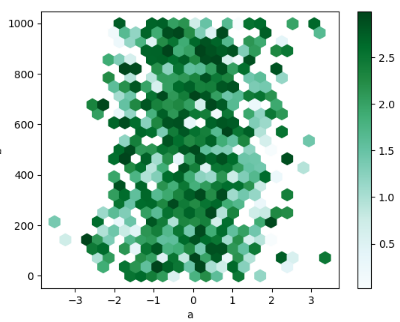Pandas is an open source, BSD-licensed library providing high-performance, easy-to-use data structures and data analysis tools for the Python programming language.

Hexagonal binning with Hexbin: extract from the Visualization chapter
This reference is available here. See the Package overview for more detail about what’s in the library. This online documentation (with last revision dated November 1, 2019) covers the following topics:
What’s new in 0.25.3 (October 31, 2019)
Installation
Getting started
- Package overview
- 10 minutes to pandas
- Essential basic functionality
- Intro to data structures
- Comparison with other tools
- Tutorials
User Guide
- IO tools (text, CSV, HDF5, …)
- Indexing and selecting data
- MultiIndex / advanced indexing
- Merge, join, and concatenate
- Reshaping and pivot tables
- Working with text data
- Working with missing data
- Categorical data
- Nullable integer data type
- Visualization
- Computational tools
- Group By: split-apply-combine
- Time series / date functionality
- Time deltas
- Styling
- Options and settings
- Enhancing performance
- Sparse data structures
- Frequently Asked Questions (FAQ)
- Cookbook
Pandas ecosystem
API reference
- Input/output
- General functions
- Series
- DataFrame
- Pandas arrays
- Panel
- Index objects
- Date offsets
- Window
- GroupBy
- Resampling
- Style
- Plotting
- General utility functions
- Extensions
Development
- Contributing to pandas
- Internals
- Extending pandas
- Developer
Release Notes
